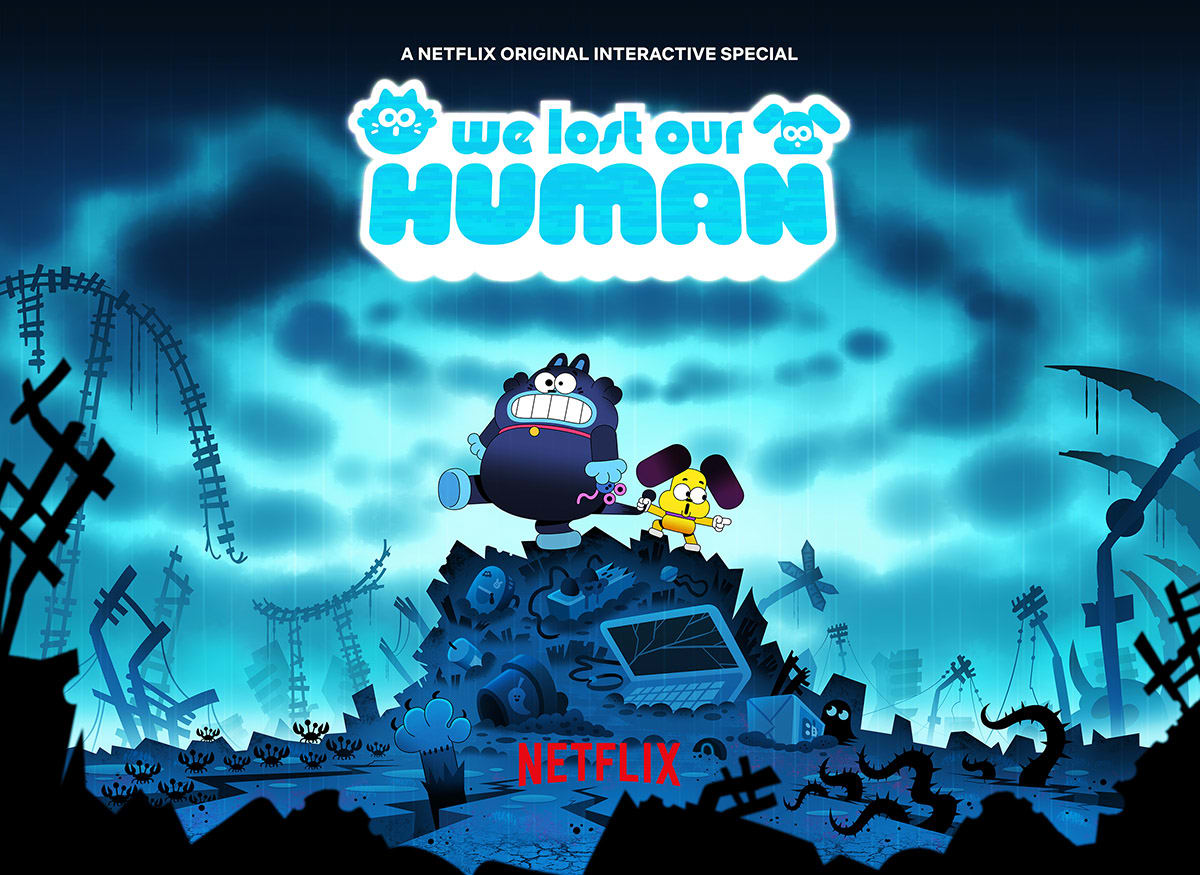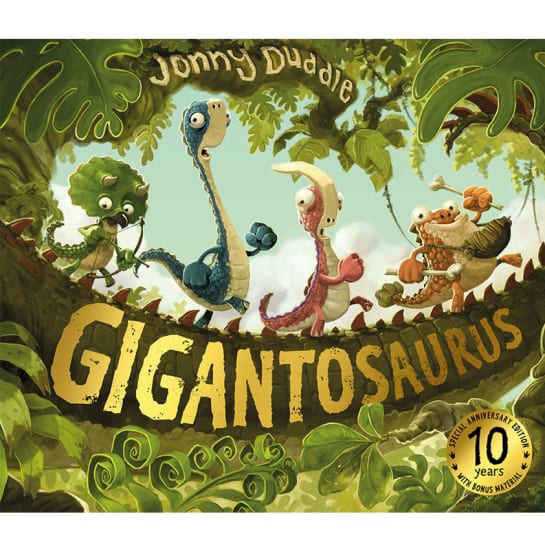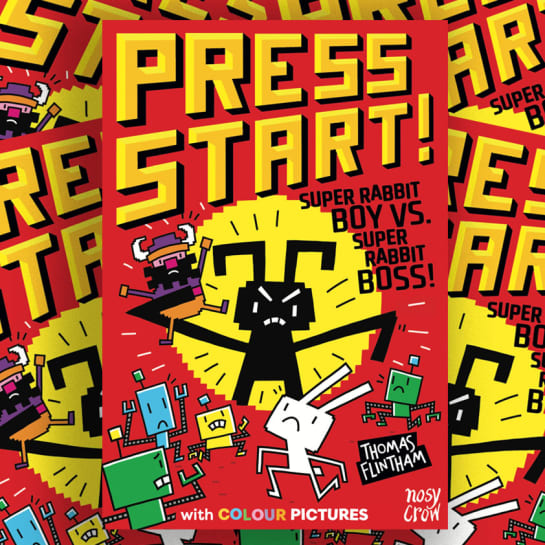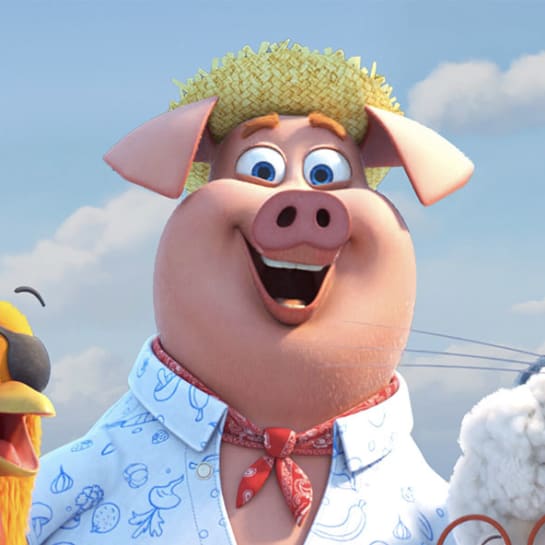We Lost Our Human is an epic animated interactive special that will be launching worldwide on Netflix on March 21st, created by Chris Garbutt and Rikke Asbjoern.
Check out the We Lost Our Human trailer below but first, we asked Chris Garbutt to tell us more...
What is We Lost Our Human and what is it about?
It’s about an indoor cat and dog called Pud and Ham, who wake up one morning to find that their owner has disappeared. So, they venture into the outside world for the first time to find her and soon discover that all humans have disappeared from the planet! They then find themselves on a wild trip through the universe, discovering strange new worlds, bizarre creatures and general mayhem, and soon realize that every choice they make has huge consequences!
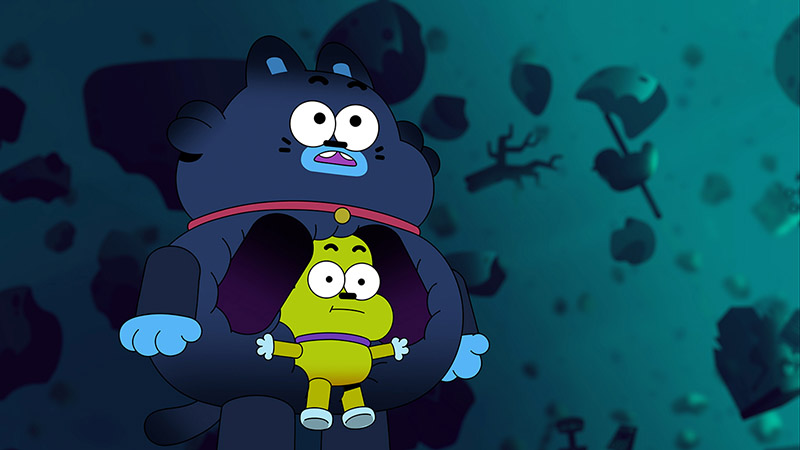
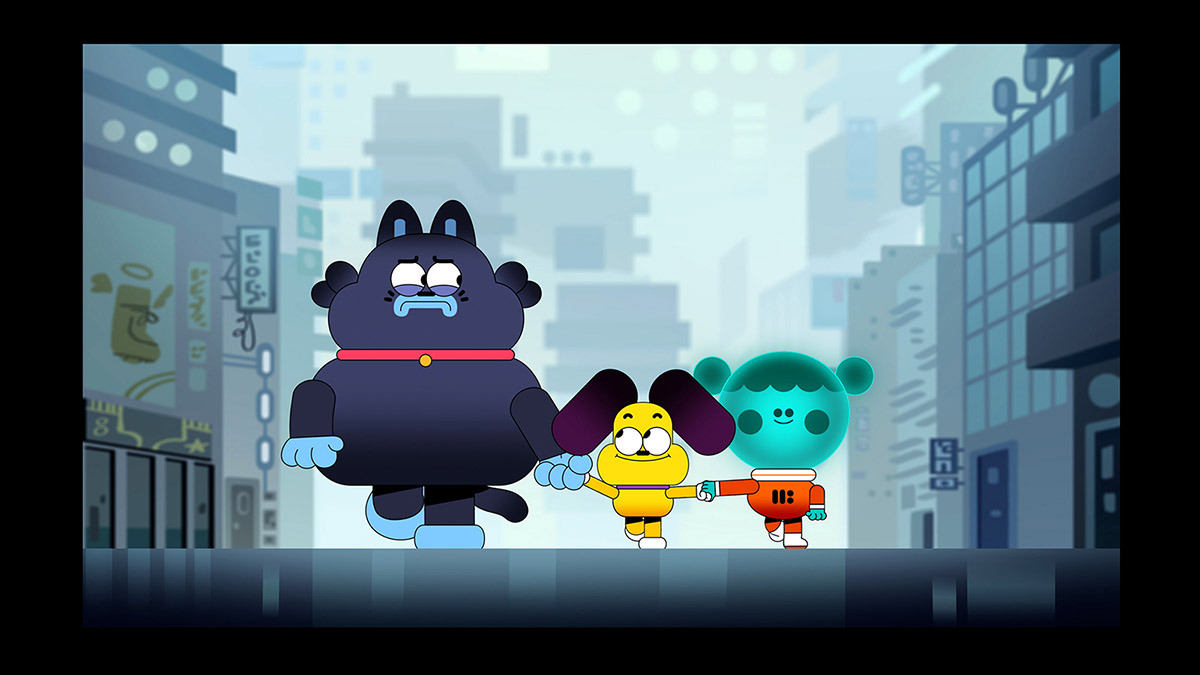
How did the project originate and what was the pitching process like?
Myself and co-creator, Rikke Asbjoern, had just finished making Pinky Malinky and were throwing together a bunch of new ideas. We’d heard Netflix were looking for an interactive, choose-your-own-adventure-style project, so we came up with this idea specifically to fit that format.
We knew we wanted to do a very character-driven story, and took inspiration for the personalities of Pud and Ham from our own cats. So, we put a handful of pages together (a cover page, a written synopsis, and some mood board images), and then pitched it to Netflix along with some other ideas. They immediately responded to We Lost Our Human, and after a bit of fleshing out of the pitch deck, they brought us in-house to their new animation studio in Hollywood to develop the project further.
How did you approach the writing for a branching narrative project?
First off, myself and Rikke wrote a linear ‘golden path’ outline of the whole story. This was the basic ‘beginning, middle and end’, but without any of the diverging paths.
Once that had been approved, we then started the grand task of building upon the linear narrative, and creating the entire branching story, with it’s many, many paths. To do this, we created a writers room consisting of myself, Rikke, two other writers, and a script co-ordinator. We had giant cork boards all over the walls and then, using post-it notes, we first of all laid out the story from the liner ‘golden path’ outline, across acts one, two and three.
From there we started to build in ‘choice-points’ (the interactive choose-your-own-adventure choices) and experimented with where the story would branch off, and where those alternative paths would take us, ultimately crafting the giant interactive behemoth that it became!
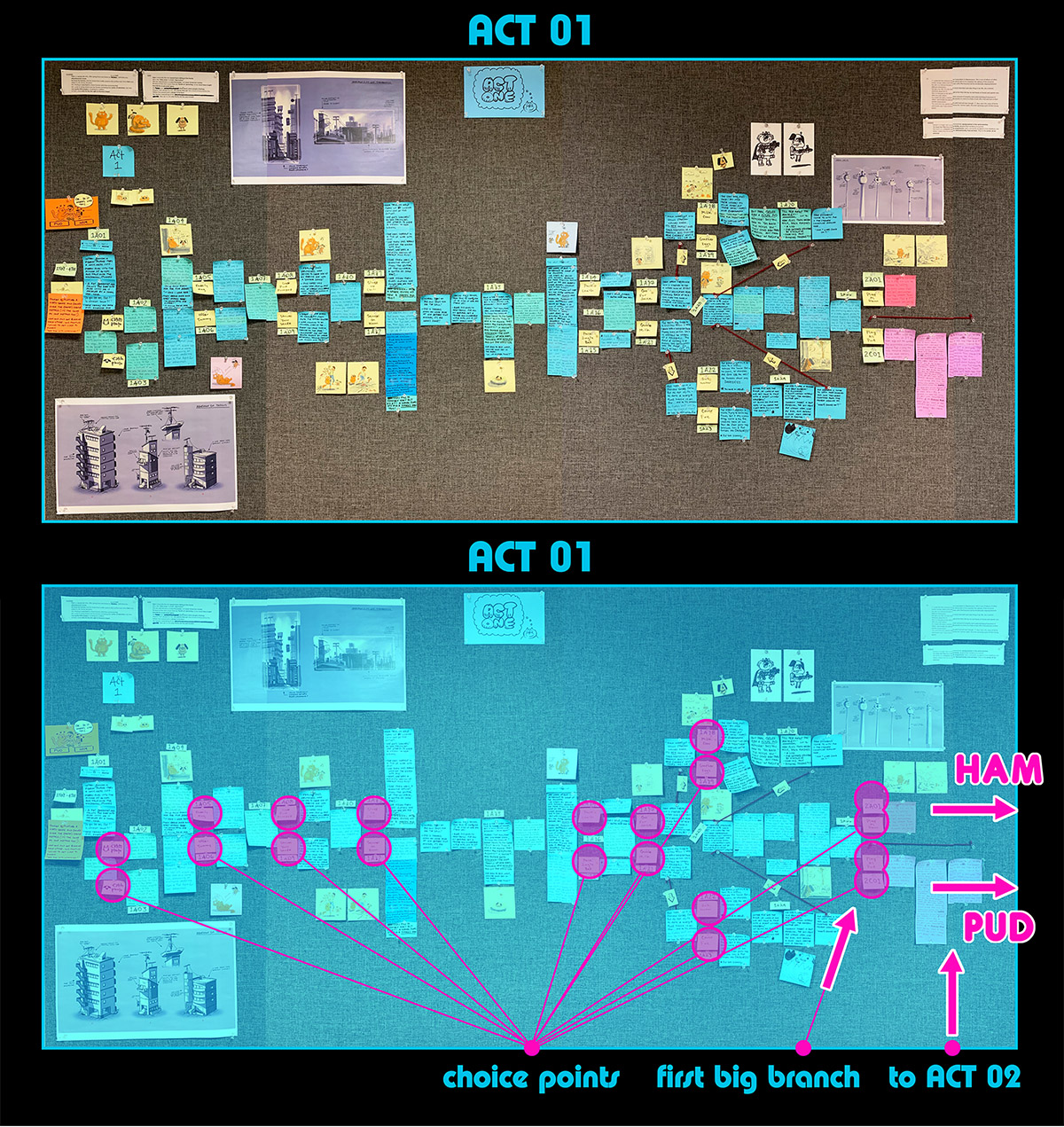
It was very important for us to have the story existing on physical boards all around us, where we could see the whole thing, and easily move beats and post-it notes around, as we tweaked and evolved the story. It helped give us a full picture of the whole thing.

We had it existing in this form for quite a few months, and would pitch it over and over again to whomever we could drag into the writers rooms. Then, once we had refined it as best we could, and had it approved by the network, we then began to transcribe the post-it note version into Netflix’s own interactive, branching narrative software, Branch Manager. Within that software we then worked up and polished the outline, and ultimately developed that into a script.
How did working on a branching narrative project differ to a more linear project?
Because it is not episodic and, by the nature of it’s interactivity, everything from beginning, middle to end was very connected and reliant on each other, we had to first of all figure out a production process that would allow us to have a certain amount of flexibility when it came to approval and locking picture.
Basically, if we landed on something in our last sequences that would then needing changing in our early sequences, we needed the ability to do that. We couldn’t just follow exactly the traditional staggered shipping process of something like a regular series, so our production became a unique hybrid, somewhere between a series and feature model.
Another major difference was audience expectation. Because we’re encouraging the audience to ‘sit up’ and actually interact with the content, rather than just passively watching the story unfold, there is a different kind of expectation as to how that interaction should be ‘rewarded’.
We had three narrative design consultants working with us at different times along the production to help bring their knowledge from video games and other interactive content, so we could understand how best to approach that part of the process.
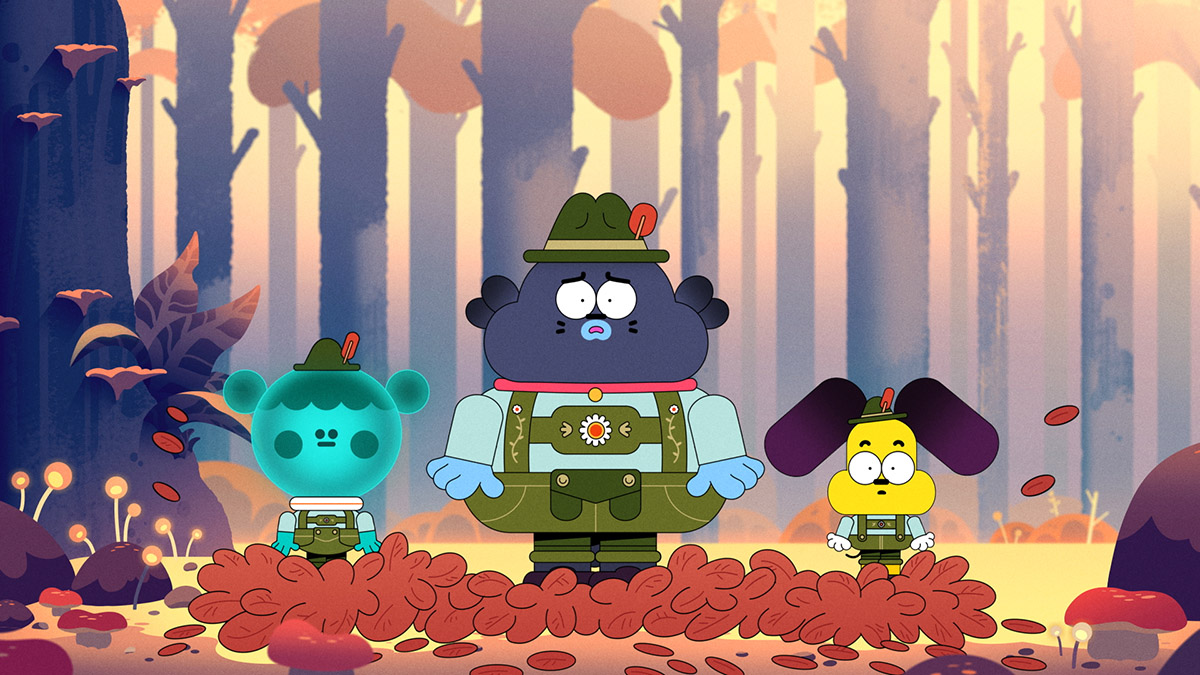
What unexpected challenges arose to the unique format of this production?
One major challenge was just how long some aspects of production took compared to the time it would take on a regular, linear production. For example, when it came to storyboarding and animatic editing, there were often multiple sequences that could possibly connect to multiple other sequences. So, we had to spend A LOT of time checking how shots hook-up across and into the many possible other shots they could connect to. That extra checking, and subsequent revisions, definitely took a lot longer than we expected.
Because technically the project is made up of multiple separate sequences that are ‘wired’ together, there were also added complications of how music and sound would be placed and edited, not only to work across the sequences ‘gaps’, but also the alternative paths. We also had to figure out how to approach the choice point moments with their specific technical parameters while not losing the audience or breaking the flow of the narrative.
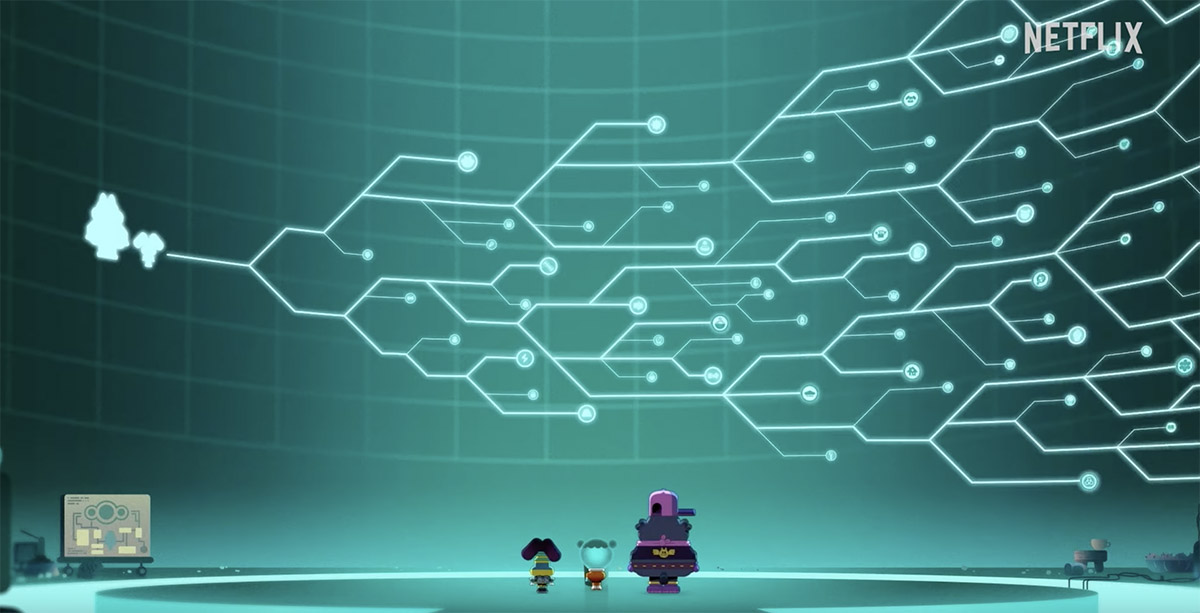
How does ‘player control’ change your role as a director and storyteller?
As mentioned before, the expectation from the audience is different because of their proactive interaction, so it’s all about rewarding the effort and thought made by the audience, and paying off the choices that are being made.
You really want to acknowledge the choice the audience make and let them clearly see how their choice effected the story.
It was also an area we were very wary about, as from day one we wanted this to be a very character-driven story, with Pud and Ham having very clearly defined personalities and ‘wants’. So, we had to figure out how to maintain that, but also give the audience the ‘freedom’ to make decisions for the characters.
We found the best way to approach that was to make sure the choices, even though they would be quite different from each other, would still be believable for the characters that we set up. They’re very character-driven choices, if you like!

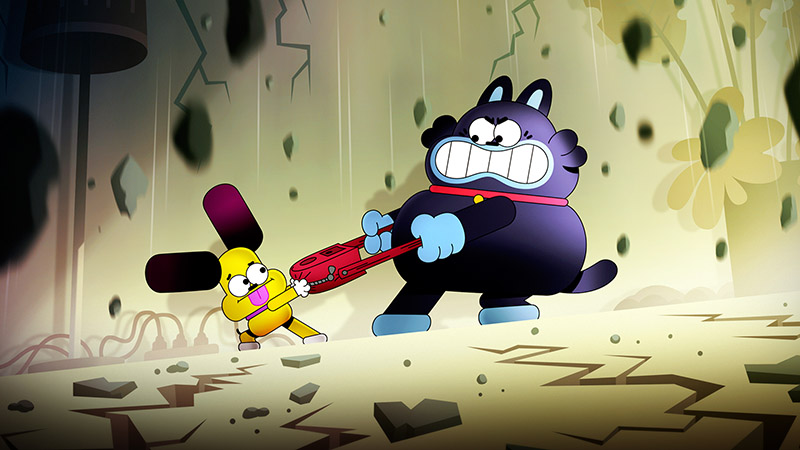
What was your inspiration for the art direction of the project?
Because of the budget, we knew from day one that this would be a 2D animated project, so knowing the software (Harmony) gave me a starting point as to the technical parameters, and then it was all about how do we push the look within that.
I wanted to have a very graphic look, but I also wanted to achieve a good amount of volume and depth alongside that aesthetic. Myself and Rikke really wanted WLOH to look cinematic, epic, with a very rich and sophisticated approach to colour and light, and be reaching for a more feature-like mood and tone. So, we really pushed the scale of things, with these tiny, little, inconsequential household pets on this huge adventure across massive landscapes.
For specific design inspiration, I looked at a lot of Japanese Manga and Anime, as well as Japanese packaging, logo and mascot design, so it has a real Japanese flavour to the look.
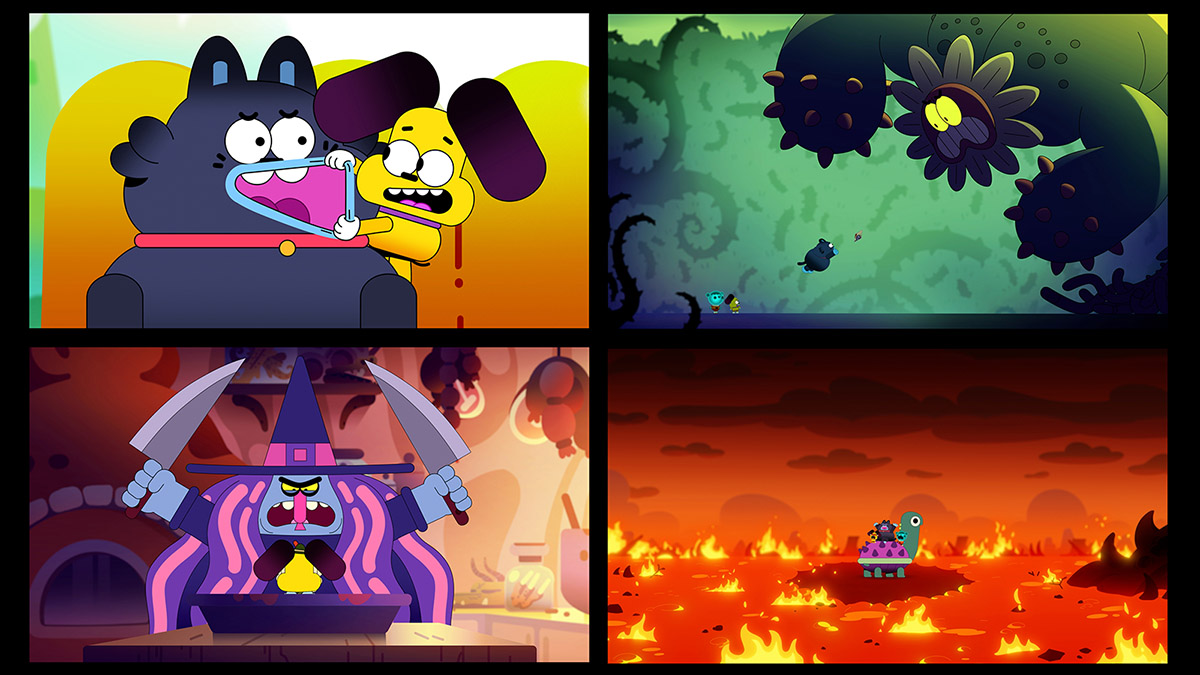
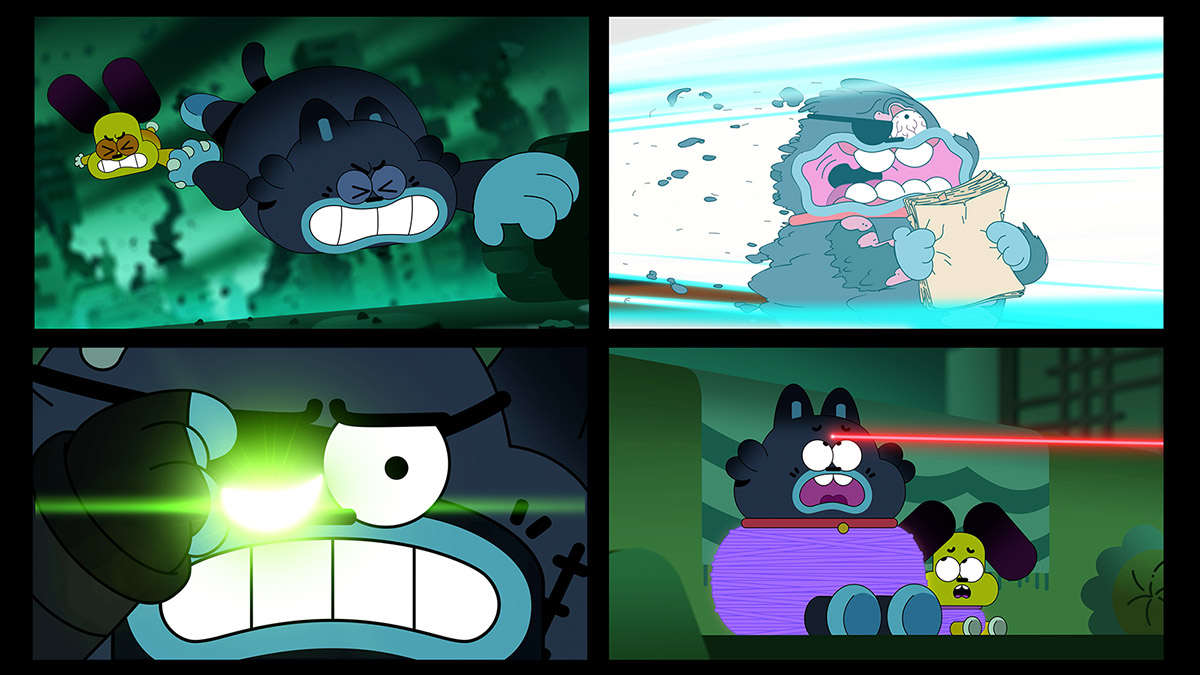
What’s the ideal ‘experience’ for a viewer to have with We Lost Our Human?
I guess, because it’s interactive, it’s up to the viewer to create the ideal experience for themselves. It’s all about making choices, and then hopefully we’ve done our job by rewarding the choices made, and giving everyone a fun and satisfying experience!
As I mentioned before, it’s not episodic like a series, it’s much more akin to a feature and will take around the same amount of time to watch as that. Although, with all the extra content that may be ‘missed’ on the first play through, there is the possibility to watch/play it for even longer!
We had our main narrative designer who worked on the tech side of stuff at Netflix do some calculations for us, and he figured out that, if the viewer wanted to watch every single permutation of the story, basically watch all the different endings and every variation of how to get to those endings, there are over 87 BILLION ways of doing that!
87,178,291,200 to be precise.
So, that should keep everyone busy for a while!
Here's the TRAILER!
Watch We Lost Our Human lands on Netflix on Tuesday 21st March - you can also subscribe Netflix After School YouTube channel.
Images © 2022 Netflix, Inc.
